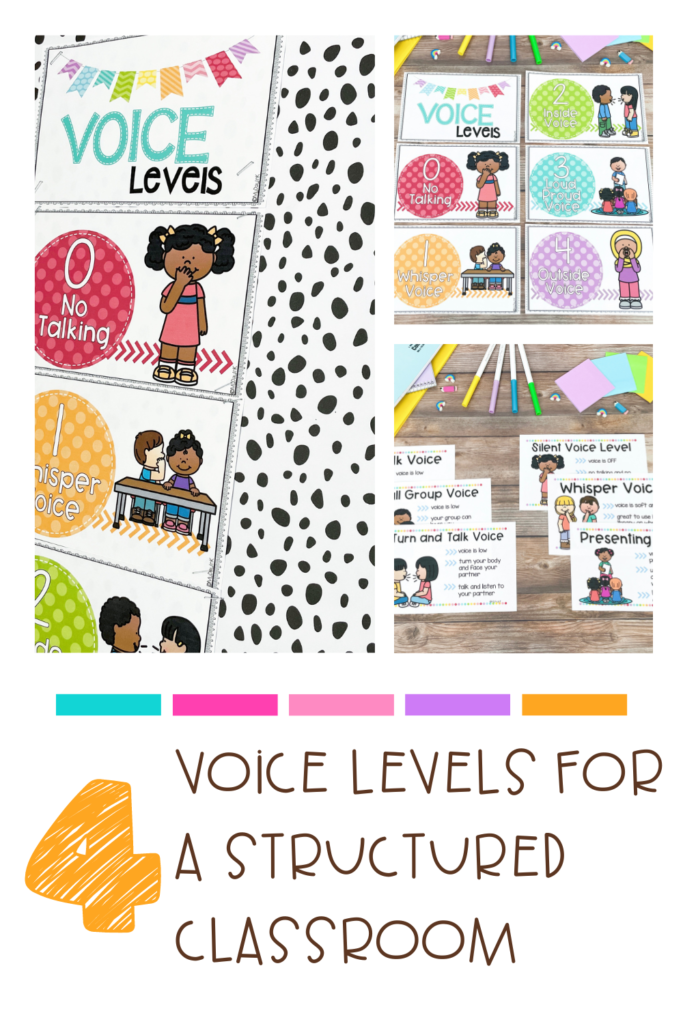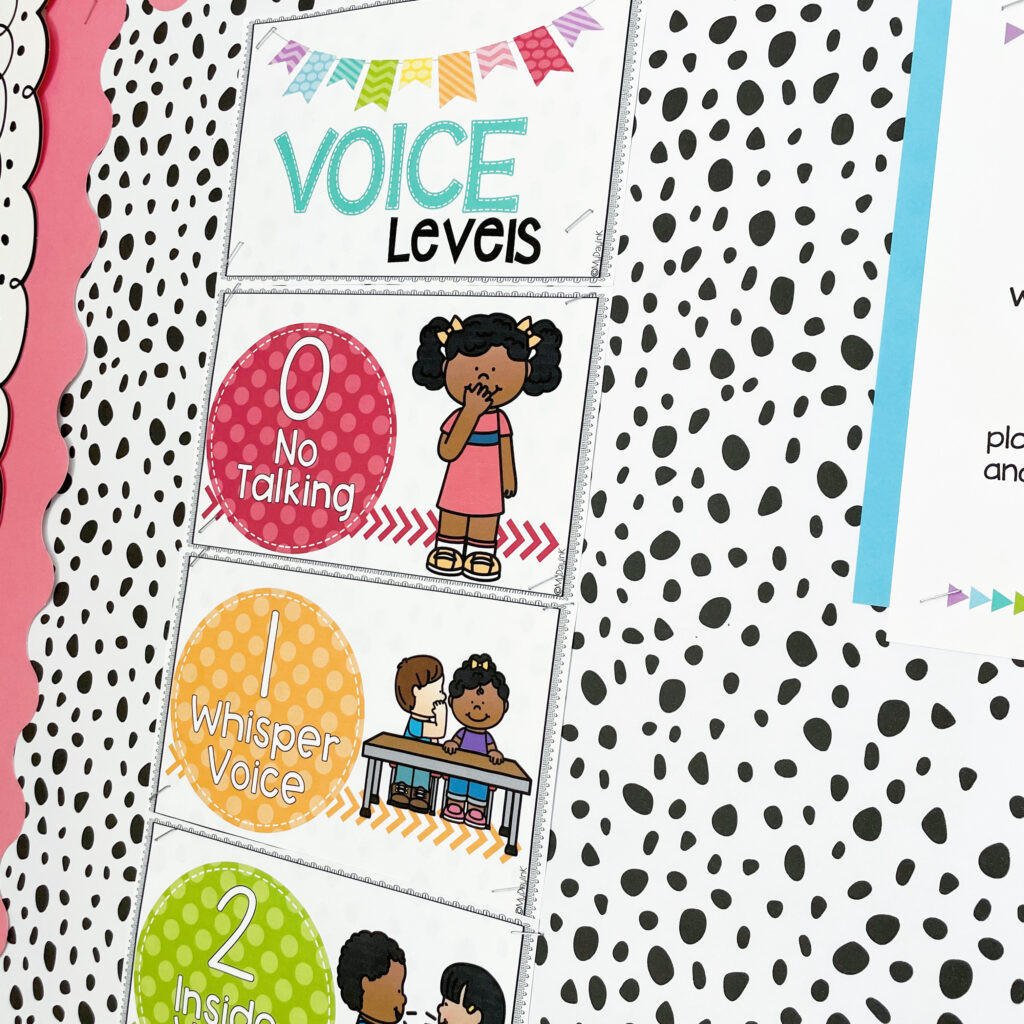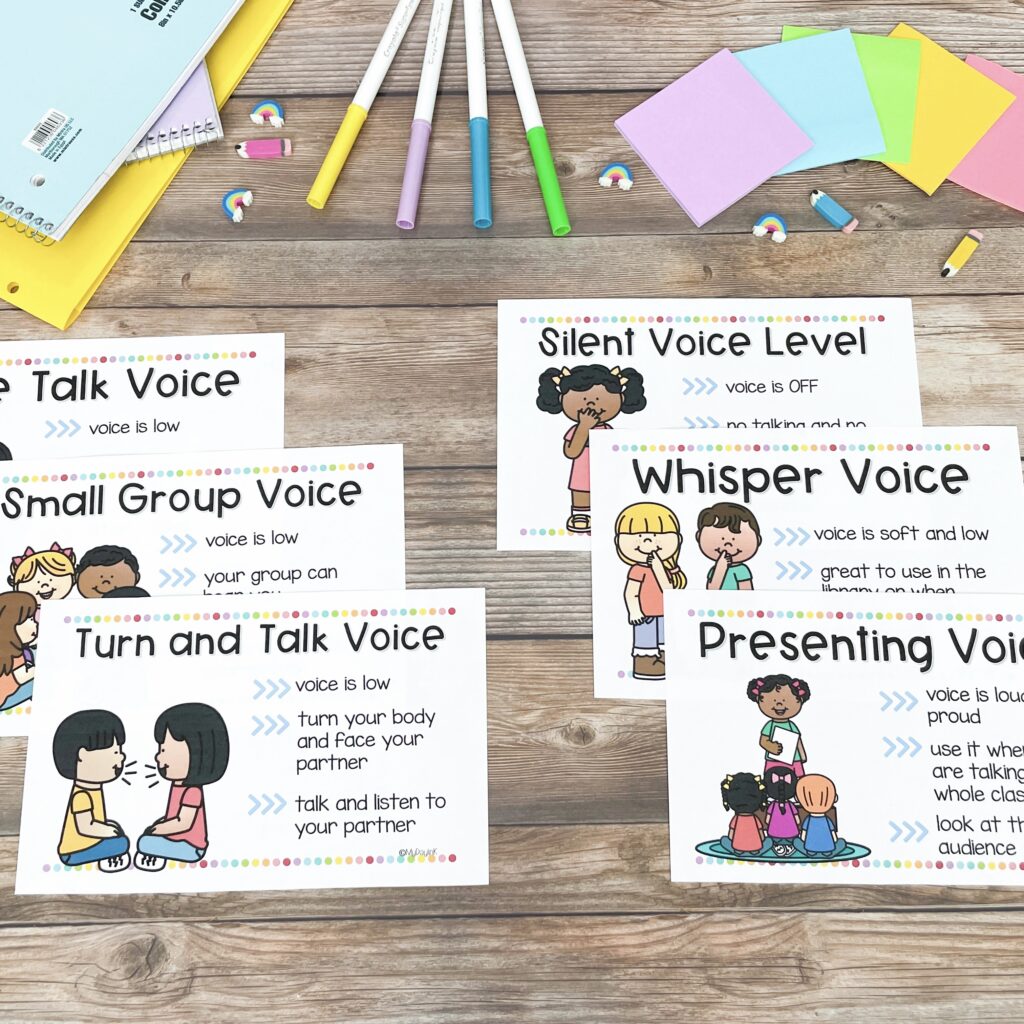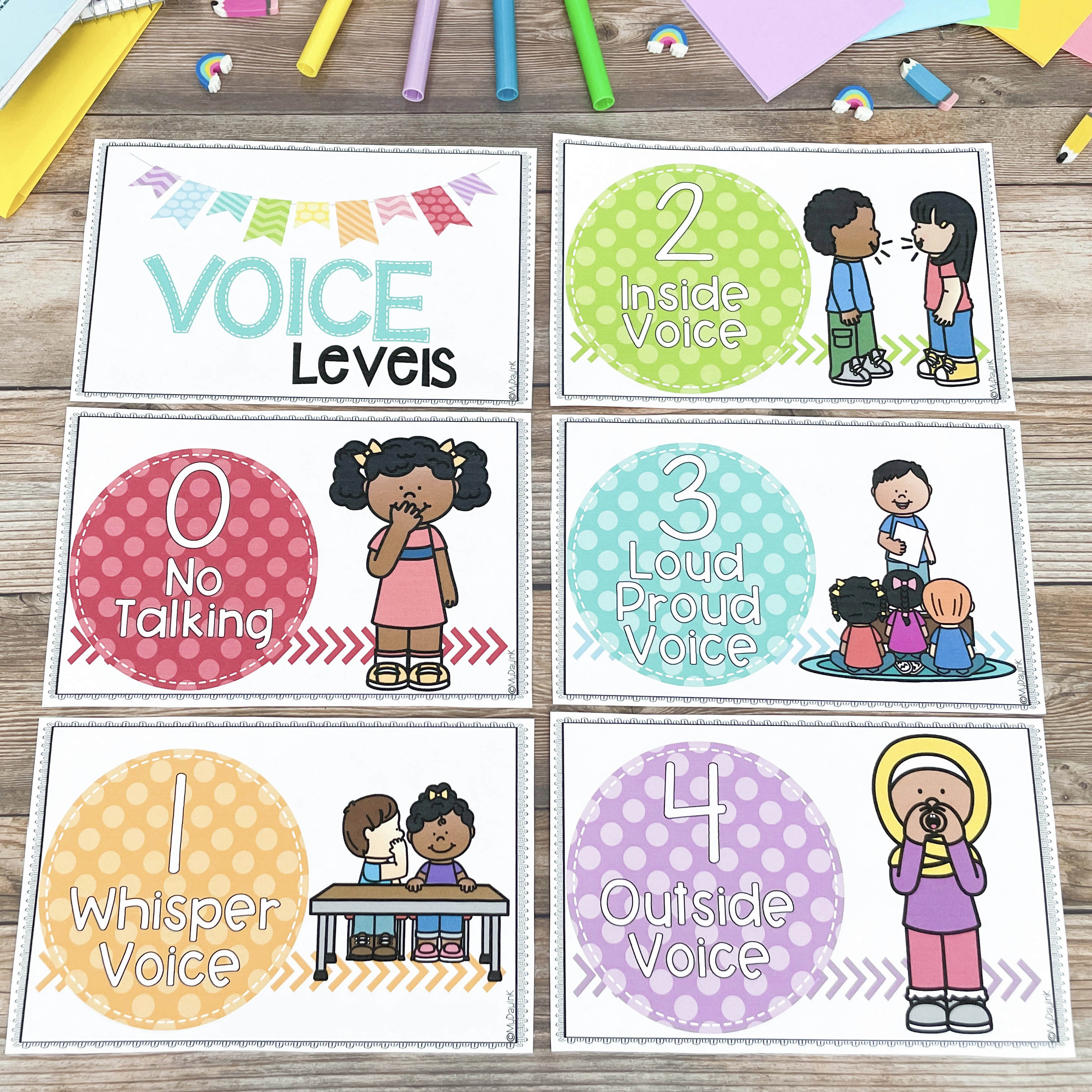Mastering the Art of the 4 Voice Levels in the Classroom: A Guide for Teachers
Creating a harmonious and productive learning environment in the classroom requires more than just engaging lesson plans and colorful decorations. Although I absolutely love both of those things. Knowing that those things alone do not make a classroom run smoothly is important. Classroom management is one of the most challenging parts of being a teacher, and student voice level is tricky to master. The “4 voice levels” are important for maintaining a respectful and focused atmosphere. From understanding the different voice levels to implementing them effectively, using the “4 voice levels” is an easy way to enhance classroom management and student engagement.
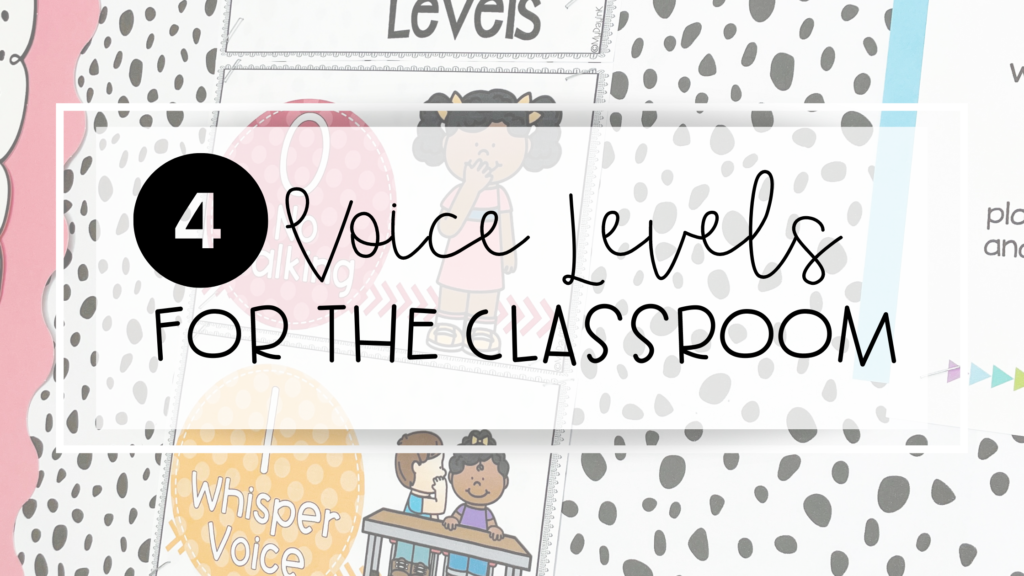
Importance of Teaching Primary Students about Voice Levels
Teaching primary students about voice levels at the beginning of the year sets clear expectations for classroom behavior and fosters a respectful learning environment. By introducing voice level expectations early on, students learn the importance of appropriate volume and communication skills, setting them up for success in various activities and group settings.
Understanding the 4 Voice Levels
The concept of the “4 voice levels” refers to a system used in classrooms to regulate the volume and intensity of student communication. These voice levels help establish clear expectations for appropriate noise levels during different classroom activities.
Quiet Voice (Level 0)
At Level 0, students use whispering or silent communication. This level is ideal for individual work, such as silent reading or independent assignments. Examples include whispering to a partner during a collaborative task or working quietly on a worksheet.
Low Voice (Level 1)
Level 1 involves speaking softly at a conversational volume. It’s suitable for small group discussions, partner work, or quiet conversations during independent activities. Students should be able to hear each other without disturbing others around them.
Medium Voice (Level 2)
Level 2 allows for a slightly louder speaking volume, suitable for whole-class discussions, presentations, or group projects. It’s louder than Level 1 but still maintains a respectful noise level that allows everyone in the room to focus and participate.
Loud Voice (Level 3)
Level 3 is reserved for times when students need to project their voices, such as during performances, debates, or classroom celebrations. While louder than the other levels, it’s important for students to understand that Level 3 should be used sparingly and with consideration for others.
Now, you can increase the number of levels you have to include whatever you feel fits your classroom. The “4 voice levels” above are just some of the common ones used in classrooms. But that doesn’t mean you can’t change them to fit your managment style, age level, etc.
Additional Voice Levels for Specific Situations
In addition to the 4 main voice levels, teachers may also introduce other voice levels tailored to specific activities. These could include:
– Small Group Voice
– Table Group Voice
– Turn and Talk Voice
These additional voice levels help students understand the appropriate volume for different moments throughout the day, whether they are engaged in group work, collaborative discussions, or partner activities.
Implementing and Displaying Voice Levels in the Classroom
To implement the 4 voice levels effectively, establish clear expectations and model each level for students. Use visual cues such as tap lights or push lights to signal transitions between voice levels. Incorporate voice level discussions into daily classroom routines and reinforce positive behavior when students adhere to appropriate noise levels.
Displaying voice level posters or charts in prominent areas of the classroom, such as near the front board or at group workstations, reinforces expectations and serves as a visual reminder for students. Consider incorporating voice level displays into your classroom decor, using embedded fonts or colorful illustrations to make them engaging and easy to understand.
Why Having the “4 Voice Levels” Posted in the Classroom Is Important
Having the “4 voice levels” visibly posted in the classroom serves several important purposes. Firstly, it provides a visual reminder of the expectations for appropriate noise levels during different activities. Students, especially younger ones or those with diverse learning needs, benefit from visual supports that reinforce verbal instructions.
Secondly, displaying the voice levels promotes consistency in classroom management. When students clearly understand what is expected of them in terms of volume and communication, it minimizes confusion and reduces disruptive behaviors. Teachers can refer back to the posted voice levels as needed to redirect students and reinforce expectations.
Additionally, having the voice levels posted encourages student accountability and self-regulation. Students can monitor their own behavior and adjust their volume levels accordingly based on the activity they are engaged in. This fosters independence and empowers students to take ownership of their learning environment.
Overall, the presence of voice level displays in the classroom contributes to a positive and productive learning environment. It sets the tone for respectful communication, promotes engagement in learning activities, and supports effective classroom management strategies.
Mastering the art of voice levels in the classroom is essential for creating a respectful and productive learning environment. Teachers can promote effective communication, collaboration, and classroom management by teaching students about the “4 voice levels” and providing clear expectations. Remember, consistent reinforcement and positive reinforcement are key to instilling good habits and creating a classroom where everyone feels valued and respected. Happy teaching!
